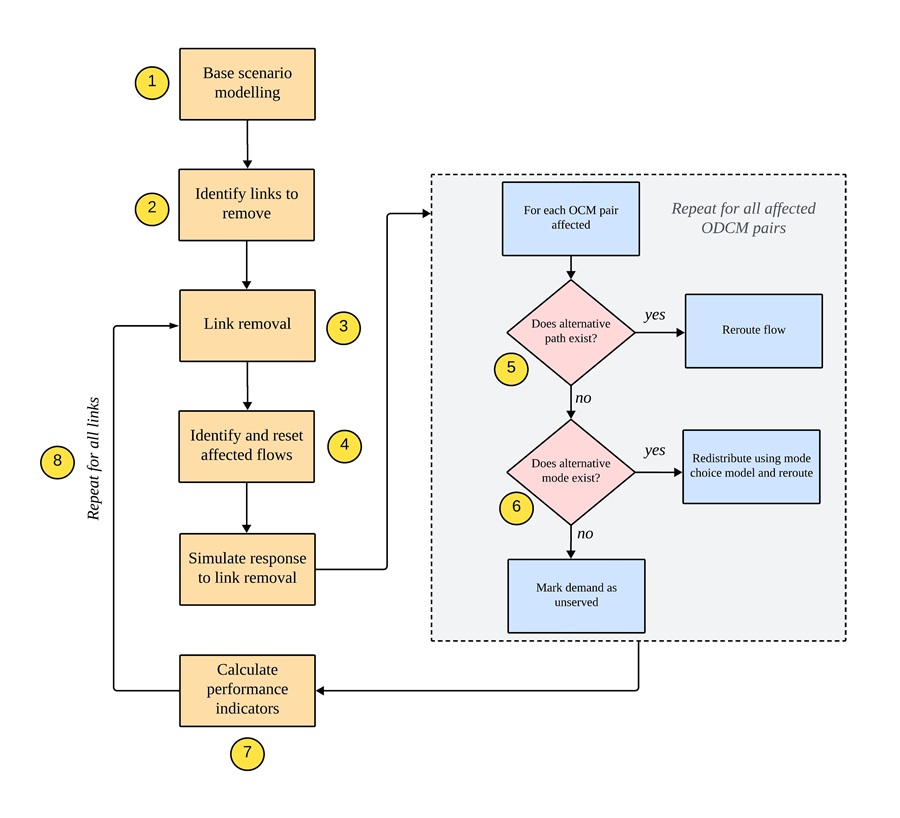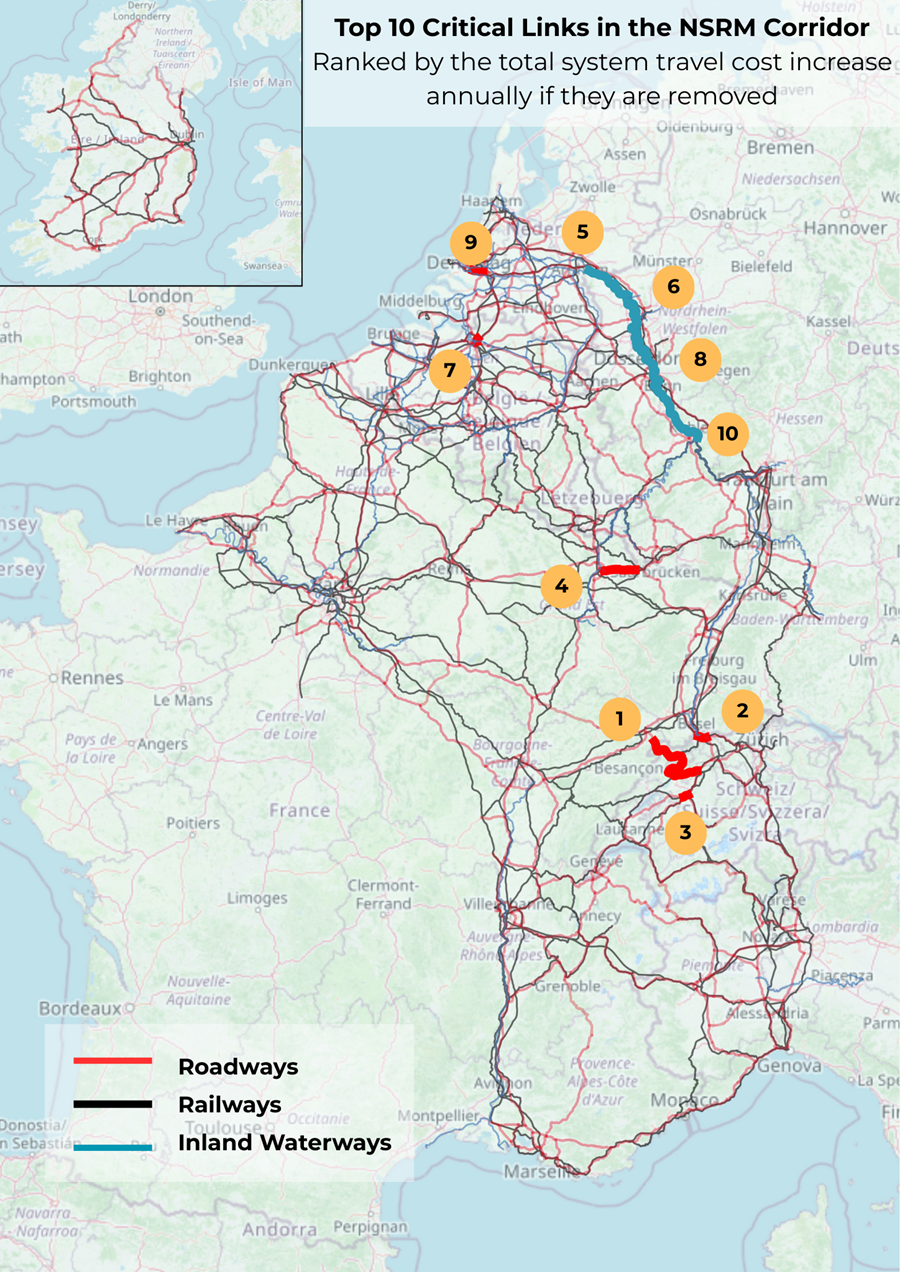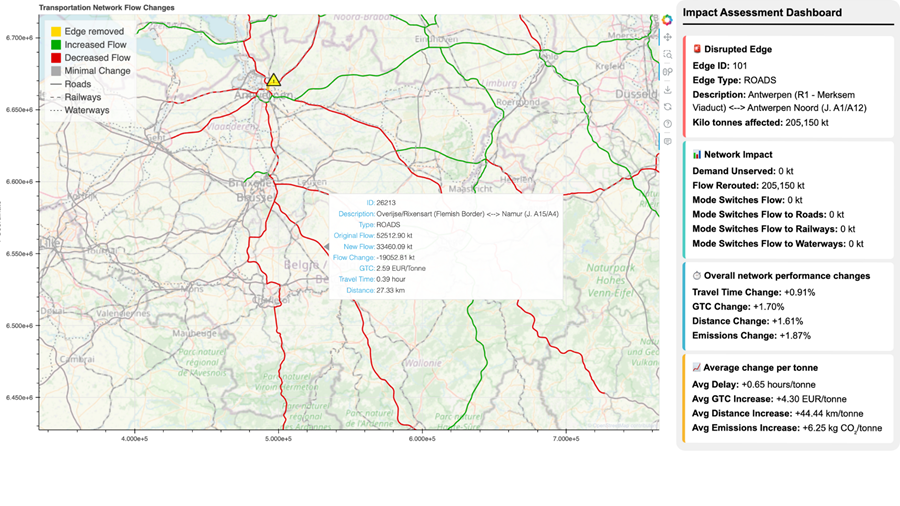Identifying Critical Links in European Multimodal Freight Networks
At Panteia, we have developed a simulation framework to identify and rank critical links in multimodal freight networks. Because the framework is scalable, it can be used at the scale of TEN-T corridors. This provides policymakers with valuable insights.
The TEN-T corridors form the backbone of European freight transport, enabling the efficient and sustainable flow of goods between member states. At the same time, these networks are exposed to a wide range of risks, including extreme climate events, accidents, ageing infrastructure, and geopolitical tensions. Such disruptions can have serious socio-economic consequences, making resilience a pressing priority. Identifying critical infrastructure is one of the first steps towards effective resilience planning. In line with this, the EU’s Critical Entities Resilience Directive calls on member states to determine which assets are essential to the continuity of core services.
Until now, most approaches to link criticality have focused on single-mode road networks or relied on data-heavy congestion models, limiting their use at the strategic TEN-T scale. This research addresses that gap by introducing a scalable framework that simulates disruptions in multimodal freight networks, capturing rerouting, mode shifts, and even cancelled demand.

Applied to the North Sea–Rhine–Mediterranean (NSRM) corridor, the framework combines Panteia’s NEAC freight demand and mode choice model with a graph-based representation of road, rail, and inland waterways. A new multimodal link criticality algorithm assesses the impact of removing individual links, measuring effects through indicators such as generalised transport costs, emissions, delays, and unserved demand. This is visualised in an Impact assessment dashboard (click on image to enlarge).

By ranking links based on both system-wide and flow-specific impacts, the framework provides policymakers with a practical screening tool. It supports investment prioritisation, redundancy planning, and diversion strategy design, while also being adaptable to national freight corridors and military mobility planning.
“By linking technical modelling with practical policy questions, this framework helps identify where resilience measures matter most for Europe’s freight system.” – Jan Kiel, senior project manager at Panteia
This tool was developed by intern Sathvik Gadiraju, under supervision of Panteia’s Jan Kiel and Merve Cebeci. Sathvik’s thesis can be found here.


